Choosing the right 3D file type is crucial, but also a bit confusing! In this article, we’ll sort through popular formats and show you the 8 best 3D file formats you should consider using in 2025.
A 3D file is a digital file that contains information about a three-dimensional object. This information can include the object’s shape, color, texture, and other attributes like animation.
3D files are used in a variety of industries, including animation, visual effects, gaming, architectural animation, 3D printing, and manufacturing. There are always new industries popping up, like AR and VR, in browser models for e-commerce and social, CAD, 3D printing, real time rendering, computer aided manufacturing, and more.
Each new industry brings its own new 3D file formats, so there are literally thousands of formats to dig through these days! This article will help you cut through the noise and get some answers.
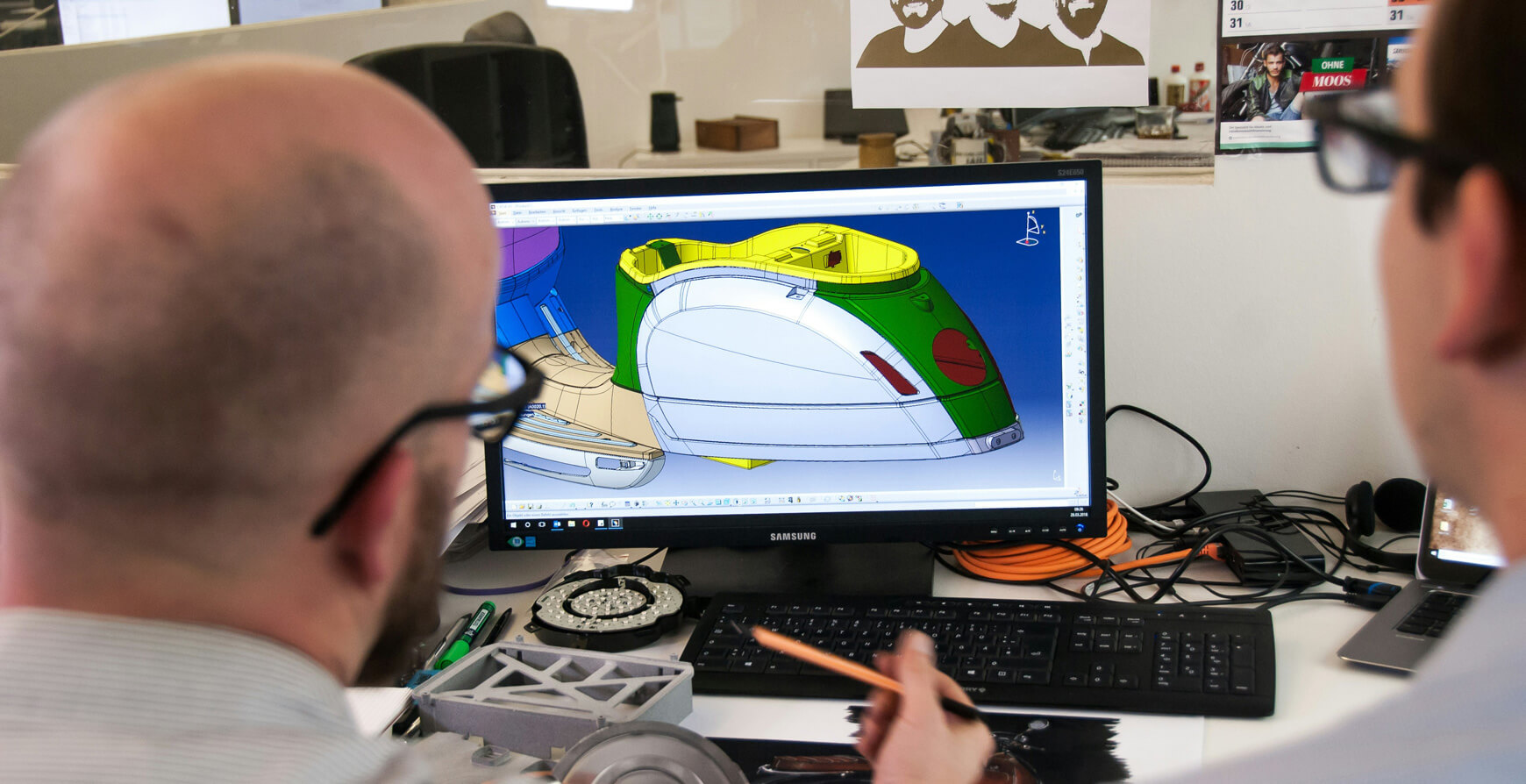
The first thing to do when deciding what is the right format for your project is to look at what software you’re using and how you plan to use the 3D assets. There are two main types of 3D files: proprietary formats and neutral formats.
A proprietary 3D file type is a format that is specific to a particular software or company. Examples of proprietary file formats include .max (3ds Max), .blend (Blender), .c4d (Cinema 4D).
These 3D file formats are often preferred for their feature-rich options with their proprietary software, but they have big limitations when it comes to interoperability with other software.

These are the walled gardens of 3D file formats! You can only use them with the specific software packages they belong to.
They are powerful and specific, but if you want an interchange format to go between different software packages, then you better look at the next next file extension type.
Neutral 3D file types are formats that are designed to be more interoperable between different software applications.
Examples of neutral file formats include .obj (Wavefront OBJ), .stl (Stereolithography), .vdb (Voxel Database) and .dae (Collada).
While these 3D file formats may not always offer the same level of features as proprietary formats, they are widely supported and can be a good choice for sharing files between different software programs and packages.
If you have a .obj 3D model, you can open it in tons of software packages, but if you have a .c4d file, well, you better hope you have Cinema 4D because nothing else will open it! That’s why a lot of big model sites, such as Cgtrader or Turbosquid almost always include a .obj file format.
Now that we know the difference between these separate file types, let’s check out the best file formats currently available and learn a little bit about them!
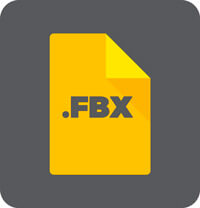
Fbx files are widely used in the gaming and film industries. Fbx files were developed by Autodesk and are known for their versatility and compatibility with many 3D software applications.
It’s often used to store 3D models, animations, textures, etc. The fbx format is one of the powerhouses, along with its close relative, obj formats.
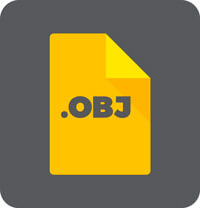
The obj format is a super popular choice for its simplicity and widespread support. The Obj files format is great for sharing 3D models across different platforms.
Obj files can store a variety of information about a 3D model, including vertex positions, vertex normals, texture coordinates, and polygonal faces, so they’re pretty powerful!
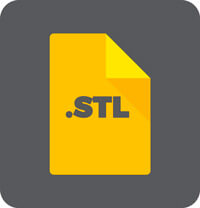
Primarily used for 3D printing, the stl file format is a must-have for anyone working in additive manufacturing.
Stl files represent the surface geometry of a 3D object using a series of connected triangles, also known as a mesh. Stl format doesn’t include information on color, textures, etc., but just surface geometry data.
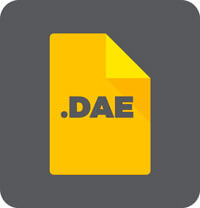
This file format is an open standard XML-based file format for representing 3D models and animations.
Designed with interoperability in mind, .dae file formats are a good choice for projects that require collaboration between different software applications. Collada files can contain geometry, materials, animations, and more.
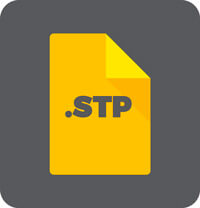
A neutral file format used for exchanging 3D data between different CAD programs and applications.
STP file formats can contain a wide range of information about a 3D model, including geometry, topology, materials, and other properties. They are commonly used in the manufacturing industry for product design, engineering, and documentation.
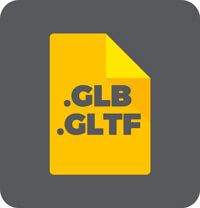
.glb/.gltf file formats are gaining popularity for their efficiency and compatibility with web-based 3D applications.
This file type can store a variety of data, including geometry, materials, textures, animations, and more. They can be used to represent complex 3D scenes with a high level of detail.
They are designed to be lightweight and efficient, making them ideal for use in real-time applications such as games and interactive simulations.

USDZ file formats were developed by Apple and Pixar for storing and displaying 3D models and augmented reality (AR) content on iOS devices.
This file type is based on Pixar’s Universal Scene Description (USD) format, which is an open-source format for describing 3D scenes and assets.
USDZ files are highly compressed and optimized for mobile devices, making them ideal for AR applications where performance and file size are critical.
They can contain geometry, textures, animations, and other data necessary to render a 3D model in an AR environment.

VDB is a file format used for storing volumetric data, such as smoke, fire, and clouds, in a three-dimensional grid of voxels.
It’s commonly used in the film industry for visual effects and computer graphics to create and render complex volumetric effects. If you want to learn more, I wrote a deep dive article all about them right here.
While the above 8 are among the best for various purposes, there are several other common 3D file formats worth mentioning:
.abc (Alembic): Alembic is an open-source file format used for storing and exchanging animated 3D geometry and scenes. It’s commonly used in visual effects and animation production pipelines for its ability to efficiently store complex animations and geometry.
.blend (Blender) – Blender’s native file format, a blend file is ideal for projects that require the full range of Blender’s features and capabilities.
.igs/.iges (Initial Graphics Exchange Specification) – Another neutral file format used for exchanging 3D data between different CAD software applications and for computer aided manufacturing.
.3ds (3D Studio) – While becoming somewhat outdated, .3ds files are still supported by many 3D software applications and are suitable for projects that require compatibility with older systems.
.dxf (Drawing Exchange Format): DXF is a CAD software file format developed by Autodesk. It’s commonly used for exchanging CAD drawings between different software applications.
.ply (Polygon File Format) – Often used in scientific and academic settings, .ply files are great for storing 3D data such as point clouds and meshes.
.max (Autodesk 3ds Max) – The .max file format is a proprietary file format used by Autodesk’s 3ds Max software. It is used to store scenes, models, animations, and other data created within 3ds Max.
.c4d (Maxon Cinema 4D) – The .c4d file format is the native file format used by Maxon’s Cinema 4D software. It is used to store data created within Cinema 4D and is very robust, but obviously a proprietary format.
When choosing a 3D file formats for your project, it’s pretty easy if you just consider the following questions to funnel it down into one file type:
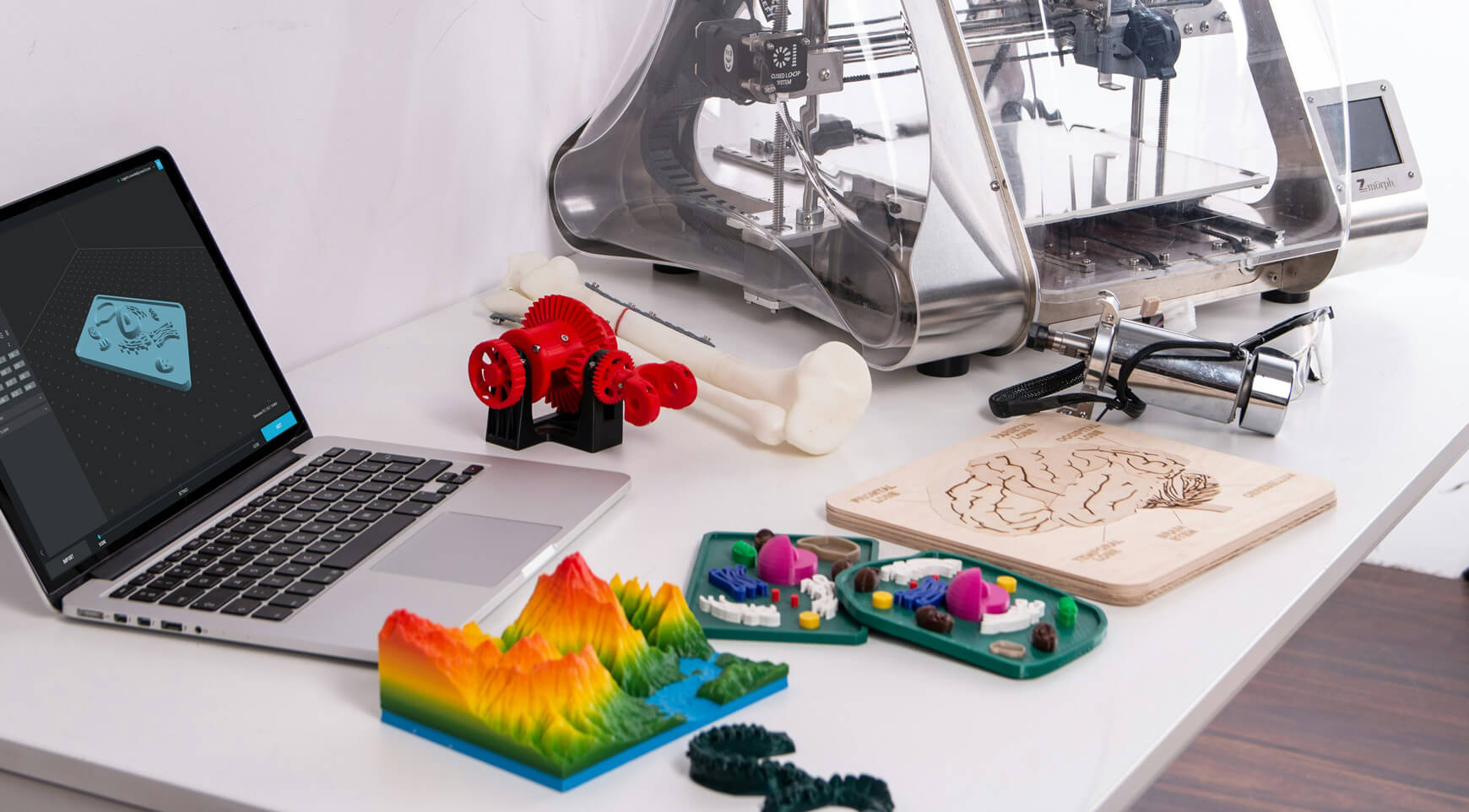
Animation: If your project involves animation, consider formats like .fbx that are well-suited for rigging and animation.
3D Simulations: For 3D sims you would want to check into .vdb or .abc files.
3D Printing: For 3D printing projects, formats like .stl are essential due to their compatibility with most 3D printers.
Interoperable 3D Models: If you need to share model files between different software applications, choose a neutral format like a obj file or a .fbx or .dae.
Native Formats: For projects that heavily rely on specific software features, using the native 3D file formats of that software (e.g., .blend for Blender, .c4d for Cinema 4D) is usually the best choice.
Compatibility: If you need to work with multiple software applications, choose a 3D file format that is widely supported across different platforms.

It’s a confusing world out there, with about 720 bazillion other file types.
There’s a list below of even more of them, and some links to continue your education. It’s a bit overwhelming, but if you stick with the top 8 or the bonus ones I listed above, you should be just fine.
These are the main 3D file format players, unless you’re looking for a very specific use case, in which case you can peruse the list below to learn more. Good luck with your 3D adventures!
Speaking of 3D file formats: if you want to check out some free 3D models, I have a post showing the top 7 sites to get them. We also have 400+ free models here at The Pixel Lab, which you can learn more about at: www.thepixellab.net/freebies
Here’s a complete list of all of the 3D file types:
3DMF – QuickDraw 3D Metafile (.3dmf)
3DM – OpenNURBS Initiative 3D Model (used by Rhinoceros 3D) (.3dm)
3MF – Microsoft 3D Manufacturing Format (.3mf) for 3d printing
3DS – legacy 3D Studio Model (.3ds)
AC – AC3D Model (.ac)
AMF – Additive Manufacturing File Format for 3d printing.
AN8 – Anim8or Model (.an8)
AOI – Art of Illusion Model (.aoi)
ASM – PTC Creo assembly (.asm)
B3D – Blitz3D Model (.b3d)
BLEND – Blender (.blend)
BLOCK – Blender encrypted blend files (.block)
BMD3 – Nintendo GameCube first-party J3D proprietary model format (.bmd)
BDL4 – Nintendo GameCube and Wii first-party J3D proprietary model format (2002, 2006–2010) (.bdl)
BRRES – Nintendo Wii first-party proprietary model format 2010+ (.brres)
BFRES – Nintendo Wii U and later Switch first-party proprietary model format
C4D – Cinema 4D (.c4d)
Cal3D – Cal3D (.cal3d)
CCP4 – X-ray crystallography voxels (electron density)
CFL – Compressed File Library (.cfl)
COB – Caligari Object (.cob)
CORE3D – Coreona 3D Coreona 3D Virtual File(.core3d)
CTM – OpenCTM (.ctm)
DAE – COLLADA (.dae)
DFF – RenderWare binary stream, commonly used by Grand Theft Auto III-era games as well as other RenderWare titles
DPM – DeepMesh (.dpm)
DTS – Torque Game Engine (DTS (file format))
EGG – Panda3D Engine
FACT – Electric Image (.fac)
FBX – The fbx file format is from Autodesk FBX (.fbx)
G – BRL-CAD geometry (.g)
GLB – a binary 3D file format form of glTF required to be loaded in Facebook 3D Posts. (.glb)
GLM – Ghoul Mesh (.glm)
glTF – the JSON-based standard developed by Khronos Group (.gltf)
.hec – Hector Game Engine – Flatspace model format
IO – Bricklink Stud.io 2.0 Model File (.io)
IOB – Imagine (3D modeling software) (.iob)
JAS – Cheetah 3D file (.jas)
JMESH – Universal mesh data exchange file based on JMesh specification (.jmsh for text/JSON based, .bmsh for binary/UBJSON based)
LDR – LDraw Model File (.ldr)
LWO – Lightwave Object (.lwo)
LWS – Lightwave Scene (.lws)
LXF – LEGO Digital Designer Model file (.lxf)
LXO – Luxology Modo (software) file (.lxo)
M3D – Model3D, universal, engine-neutral format (.m3d)
MA – Autodesk Maya ASCII File (.ma)
MAX – Autodesk 3D Studio Max file (.max)
MB – Autodesk Maya Binary File (.mb)
MPD – LDraw Multi-Part Document Model File (.mpd)
MDX – Blizzard Entertainment‘s own model format (.mdx)
MESH – New York University(.m)
MESH – Meshwork Model (.mesh)
MIOBJECT – Mine-Imator object file (.miobject)
MIPARTICLE – Mine-Imator particle file (.miparticle)
MIMODEL – Mine-Imator model file (.mimodel)
MM3D – Misfit Model 3d (.mm3d)
MPO – Multi-Picture Object – This JPEG standard is used for 3d images, as with the Nintendo 3DS
MRC – MRC: voxels in cryo-electron microscopy
NIF – Gamebryo NetImmerse File (.nif)
OBJ – Wavefront .obj file (.obj)
OFF – OFF Object file format (.off)
OGEX – Open Game Engine Exchange (OpenGEX) format (.ogex)
PLY – PLY: Polygon File Format / Stanford Triangle Format (.ply) for 3D printing
PRT – PTC Creo part (.prt)
POV – POV-Ray document (.pov)
R3D – Realsoft 3D (Real-3D) (.r3d)
RWX – RenderWare Object (.rwx)
SIA – Nevercenter Silo Object (.sia)
SIB – Nevercenter Silo Object (.sib)
SKP – Google Sketchup file (.skp)
SLDASM – SolidWorks Assembly Document (.sldasm)
SLDPRT – SolidWorks Part Document (.sldprt)
SMD – Valve Studiomdl Data format (.smd)
U3D – Universal 3D format (.u3d)
USD – Universal Scene Description (.usd)
USDA – Universal Scene Description, human-readable text format (.usda)
USDC – Universal Scene Description, binary format (.usdc)
USDZ – Universal Scene Description, a zip-compressed container (.usdz)
VIM – Revizto visual information model format (.vimproj)
VRML97 – VRML Virtual reality modeling language (.wrl)
VUE – Vue scene file (.vue)
VWX – Vectorworks (.vwx)
WINGS – Wings3D (.wings)
W3D – Westwood 3D Model (.w3d)
X – DirectX 3D Model (.x)
X3D – Extensible 3D (.x3d) for 3d printing
Z3D – Zmodeler (.z3d)
ZBMX – Mecabricks Blender Add-On (.zbmx)
3D file formats are created for very specific uses. Choosing the best format depends on what you’re using it for but the article above will help answer this!
The most common file types are probably .obj, .fbx, .stl and .dae among others.
Photoshop can open .dae, .obj, .3ds, .u3d, .kmz (Google Earth) and others as well.
STL is the most common format when 3D printing.
PDFs can read .u3d, .stp and .gitf among others.